| Lesson 3 | Tablespaces and datafiles |
| Objective | Describe how tables, tablespaces, and datafiles fit together. |
Tablespaces and Datafiles
In an Oracle database, tables, tablespaces, and datafiles are interrelated components that work together to store and manage data. Here's how they fit together:
The relationship between tables, tablespaces, and datafiles can be summarized as follows:
- Tables:
- Tables are logical structures used to organize and store data in an Oracle database.
- Each table consists of a collection of rows, where each row represents a single record or instance of data.
- Tables have a defined structure, which includes columns, data types, constraints, and indexes.
- Tablespaces:
- Tablespaces are physical storage containers that hold the data of one or more tables in an Oracle database.
- They provide a way to logically group and manage data on different storage media or physical devices.
- Each table must reside in a tablespace, and a tablespace can contain multiple tables.
- Datafiles:
- Datafiles are physical files on disk that store the actual data and metadata of tables in an Oracle database.
- They are the fundamental storage units of an Oracle database.
- Each tablespace is made up of one or more datafiles, and a single datafile can belong to multiple tablespaces.
The relationship between tables, tablespaces, and datafiles can be summarized as follows:
- Tables are logical structures that define the structure and organization of data.
- Tablespaces are physical containers that hold the data of one or more tables.
- Datafiles are physical files on disk that store the actual data and metadata of tables.
Example:
Consider a scenario where you have a table called "Customers" that stores customer information such as customer ID, name, address, and phone number. The "Customers" table is created in a tablespace called "UserData." The "UserData" tablespace is composed of two datafiles named "UserData01.dbf" and "UserData02.dbf."
In this example, the "Customers" table is the logical structure that defines the data to be stored. The "UserData" tablespace is the physical container that holds the data of the "Customers" table. The "UserData01.dbf" and "UserData02.dbf" datafiles are the physical files on disk that store the actual customer data and metadata.
By using tablespaces and datafiles, Oracle allows you to efficiently manage and organize data in your database, optimize storage resources, and improve performance.
By using tablespaces and datafiles, Oracle allows you to efficiently manage and organize data in your database, optimize storage resources, and improve performance.
CREATE TABLE Statement
Now that you have seen how to create a table with columns, let us add some details to the
CREATE TABLE statement. These additional parameters define the way that the table uses physical storage space in the database. Before describing the syntax, a little background information is needed. Before creating a table, you create a database and define the total storage space it can use. When you create a table without specifying any space-related parameters, Oracle allocates a predefined default amount of blocks within a predefined default tablespace to that table. Once you begin to add rows to the table, the row data is written to a block and the blocks are filled sequentially for each table. Use the following series of images below to see how a database grows.
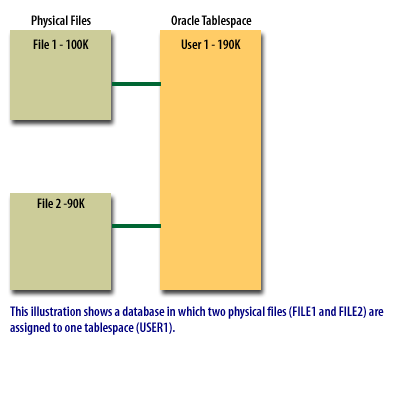
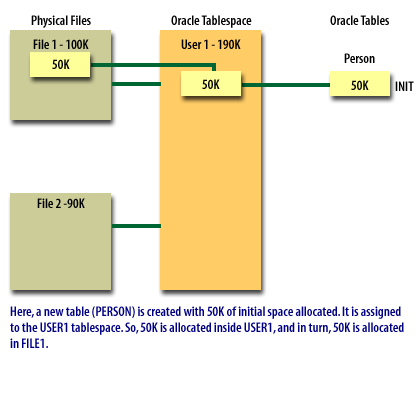
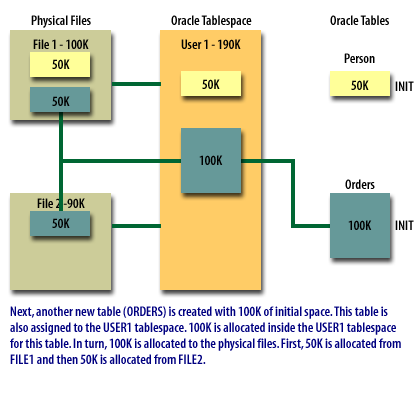
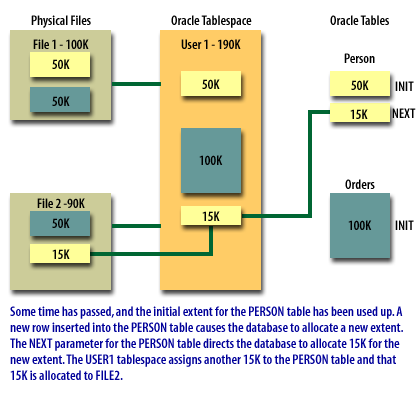
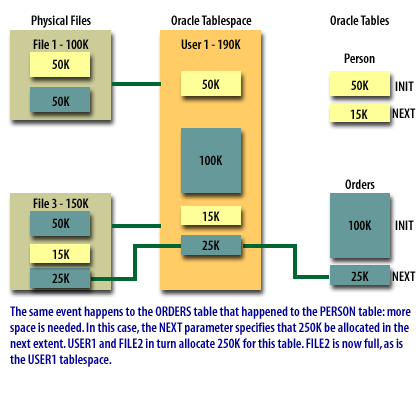
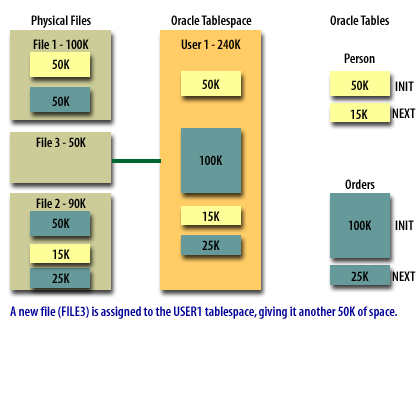
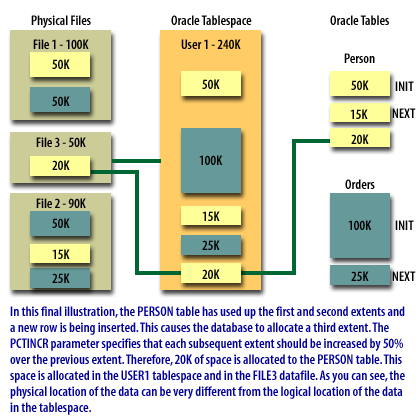
The next lesson shows you how to specify the space parameters when creating a table.
Ad Oracle Database SQL